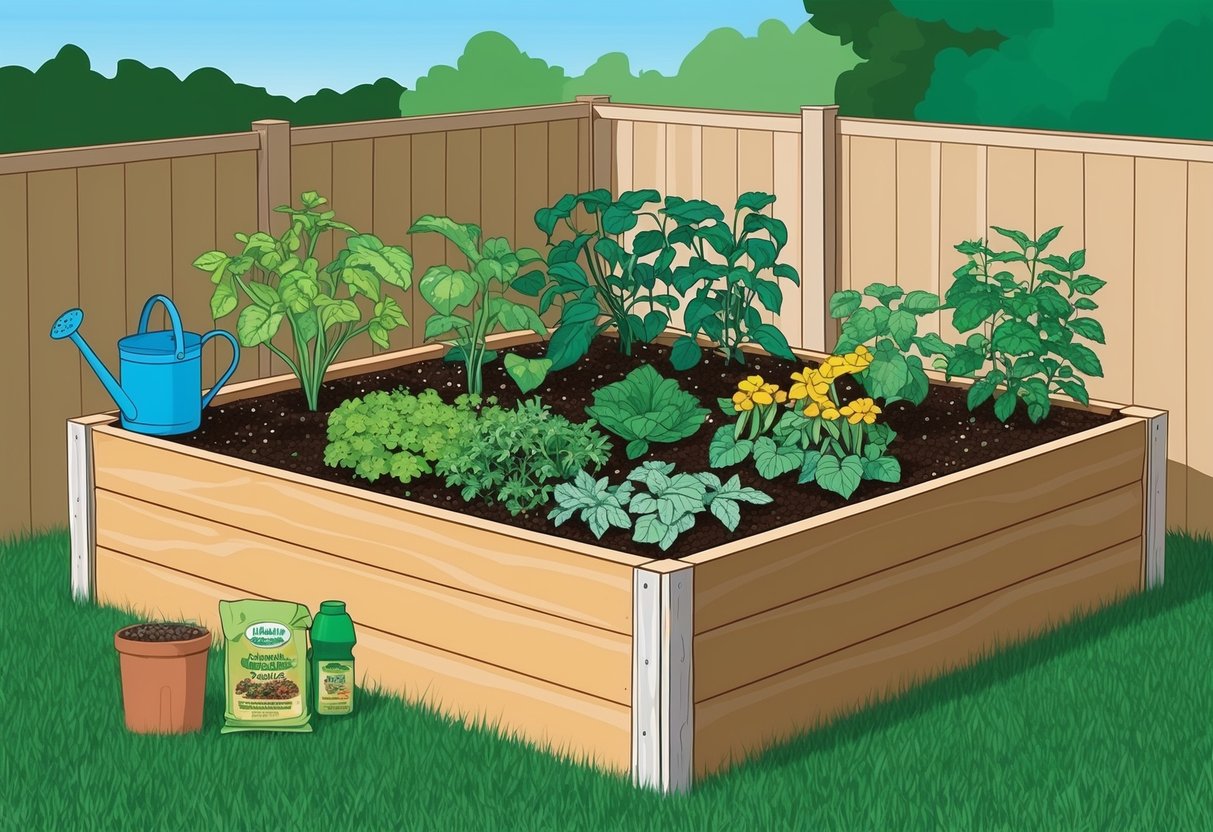
Raised bed gardening remains a popular and effective way to boost harvests while keeping garden maintenance manageable. By using raised beds, gardeners gain more control over soil quality, improve drainage, and keep roots cooler, helping plants thrive even in challenging climates.
Plants grown closely together in raised beds not only maximize space but also shade the soil to reduce evaporation and suppress weed growth. This strategy, paired with quality soil amendments and dedicated watering, creates an ideal environment for vegetables, herbs, or flowers to flourish.
Learning how to design, build, and maintain raised beds can make gardening more productive and enjoyable for both new and experienced gardeners. For those looking to minimize weeds and get more from their outdoor spaces, understanding raised bed gardening best practices is essential.
Selecting and Siting Your Raised Bed
Proper selection and placement of raised beds can dramatically boost productivity and minimize maintenance. Maximizing sunlight and choosing the right bed size creates ideal conditions for strong vegetable growth with fewer weeds.
Choosing the Optimal Location
Selecting a location with at least 6 to 8 hours of direct sunlight daily is essential for most vegetables. Shaded spots can stunt the growth of key crops like tomatoes, peppers, and beans.
Raised bed gardens thrive on level ground to prevent soil erosion and water runoff, preserving nutrients for plant roots. It’s important to keep beds away from trees and large shrubs.
Their roots compete for moisture and nutrients, reducing garden yields. Beds should be placed close to a water source to make regular watering easier, as consistent watering improves plant health.
Consider drainage as well. Sites with soggy or compacted soil will hinder root development, while a well-drained spot prevents standing water and root rot.
Determining Raised Bed Size and Shape
Raised bed size directly affects both accessibility and productivity. Beds that are 3 to 4 feet wide allow easy access from either side, reducing soil compaction since you won’t need to step into the bed.
Lengths are variable but 6 to 8 feet long is common for home gardens. Bed height commonly ranges from 6 inches to 2 feet.
Deeper beds are suited for root crops like carrots and potatoes or for areas with poor soil beneath. Shapes are typically rectangular, but L-shaped and U-shaped beds can suit various spaces, maximizing growing area in smaller yards.
For wheelchair users, higher beds with ample side clearance improve access. Using symmetrical geometry and grouping beds together helps simplify maintenance.
For more guidance, see tips on preparing a raised bed garden.
Orientation for Direct Sunlight
Orientation of the raised bed affects how uniformly plants receive sunlight. For low-growing crops such as lettuce and bush beans, a north-south orientation allows both sides to get equal amounts of sunlight during the day.
Taller plants like pole beans, peas, or corn are best planted on the north side of the bed. This setup prevents them from shading lower-growing crops.
In narrow gardens or where space is limited, aligning beds parallel to the longest dimension of your property can help maximize exposure. A north-south alignment also reduces risk of shadowing and encourages even plant growth throughout the season.
Building the Ideal Raised Bed Structure
A well-designed raised bed delivers healthier plants, makes soil management easy, and discourages unwanted weeds. Important considerations include choosing solid construction materials, correct bed dimensions, and features that promote good drainage and longevity.
Recommended Materials and Construction
Choosing the right materials ensures the raised bed is sturdy, safe for growing crops, and long-lasting. Rot-resistant lumber, such as cedar or redwood, is commonly recommended for vegetable beds.
Composite wood and untreated hardwoods are also popular for their durability. Galvanized metal can work well in some climates, providing a modern look and lasting for years without leaching chemicals.
Avoid using old railroad ties or treated wood made with chemicals like creosote or arsenic, as they can contaminate topsoil and harm plants. Use rust-resistant screws or bolts instead of nails for assembly, reducing the risk of loose corners.
For step-by-step building instructions, refer to guides like this permaculture homesteading blog. Reinforce corners with brackets or extra boards to keep sides straight under weight.
Consider using landscape fabric on the bottom to minimize weeds without blocking drainage.
Height, Width, and Soil Level Considerations
The height of a raised bed impacts both accessibility and root health. Beds that are 12 to 24 inches high usually provide ample soil depth for most vegetables while reducing the need to stoop.
For children or those with reduced mobility, taller beds can be more ergonomic. A width of 3 to 4 feet allows for easy access from each side without compacting soil by stepping in the bed.
Length can vary but should fit the site and allow for maintenance. Leave at least 18-24 inches between beds for pathways to boost accessibility and airflow.
Soil level should sit a couple of inches below the top edge to prevent washout during watering. Fill with a blend of high-quality topsoil, compost, and organic matter to ensure proper structure, drainage, and fertility.
More details about sizing can be found in this raised bed gardening guide.
Drainage and Longevity
Proper drainage keeps plant roots from suffocating or rotting. Raised beds with open bottoms naturally allow excess water to escape.
Beds should never be built on poorly draining subsoil or hard surfaces unless additional drainage layers such as coarse gravel are added. Use hardware cloth or mesh at the base if burrowing pests are an issue, without blocking water flow.
Avoid lining the entire bottom unless it’s with landscape fabric purely to block weeds. Longevity is best achieved with weather-resistant materials, quality fasteners, and regular maintenance.
Mulching and crop rotation inside the bed can also reduce weed buildup and soil-borne diseases over many years, helping the structure perform season after season.